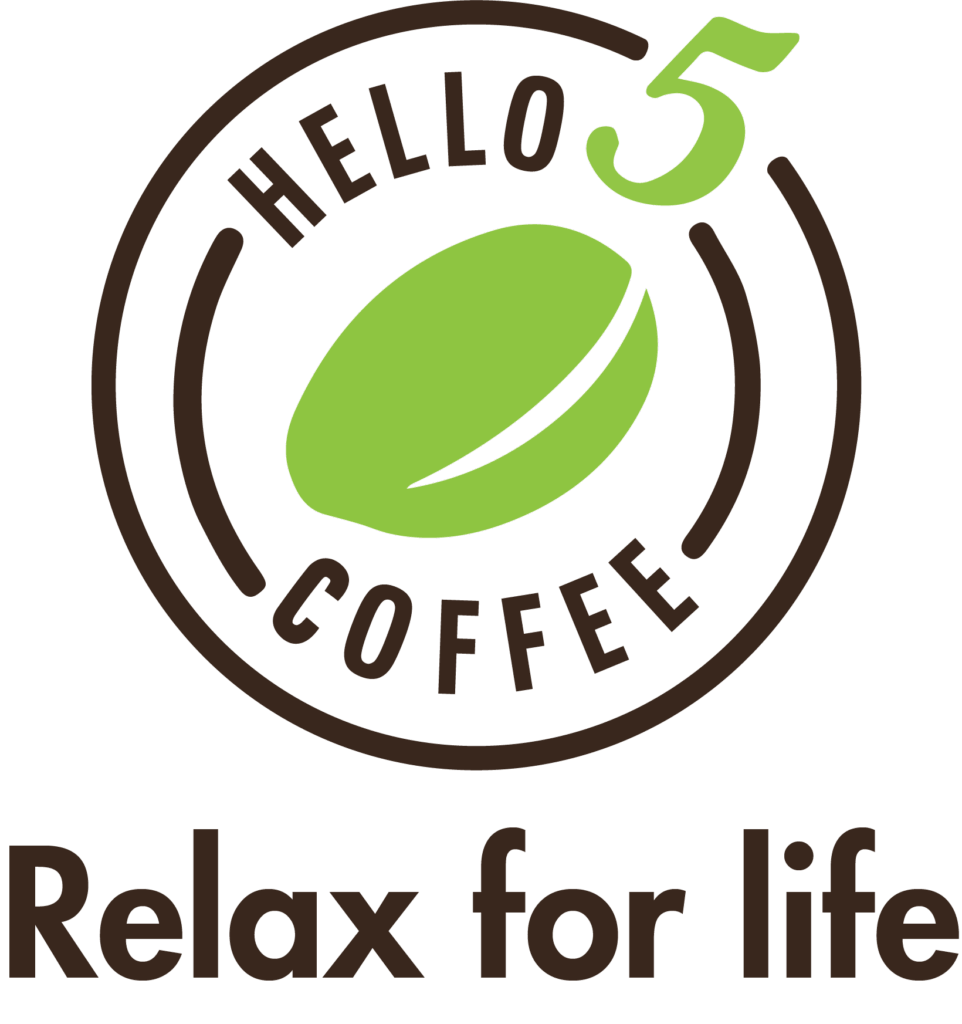Running a coffee shop is one of the choices many people make when wanting to start a business in the F&B industry. However, before entering this field, many people often ask: “Is running a coffee shop profitable and how long does it take to break even?” The answer is not simply “yes” or “no,” but depends on many different factors. To better understand the profitability and break-even time when running a coffee shop, let’s explore with Hello 5 Coffee the factors that affect coffee shop business and effective business strategies in this field.
Costs to Open a Coffee Shop
Opening a coffee shop requires a tight investment strategy and careful calculation. First, you need to determine the initial costs as well as potential costs in the first 6 months of business operations. In reality, some coffee shops can recover capital within 6 months, while other models may take 12 to 24 months to achieve this, and many also face difficulties and have to close. According to insights from F&B industry experts, the initial capital needed to open a coffee shop is divided into 4 levels:
- Budget under $7,500: Suitable for coffee cart models, focusing on morning coffee business, typically located in downtown areas or near offices.
- Budget from $7,500 to $15,000: This model is suitable for small shops with minimal investment in personnel, design, and menu ingredients.
- Budget from $15,000 to $25,000: Coffee shops at this budget level focus on product quality, location selection, and shop design with a specific style.
- Budget over $25,000: These are coffee shops with long-term investment strategies and high competition. The strategy focuses on clear capital recovery and comprehensive investment from products to shop design.
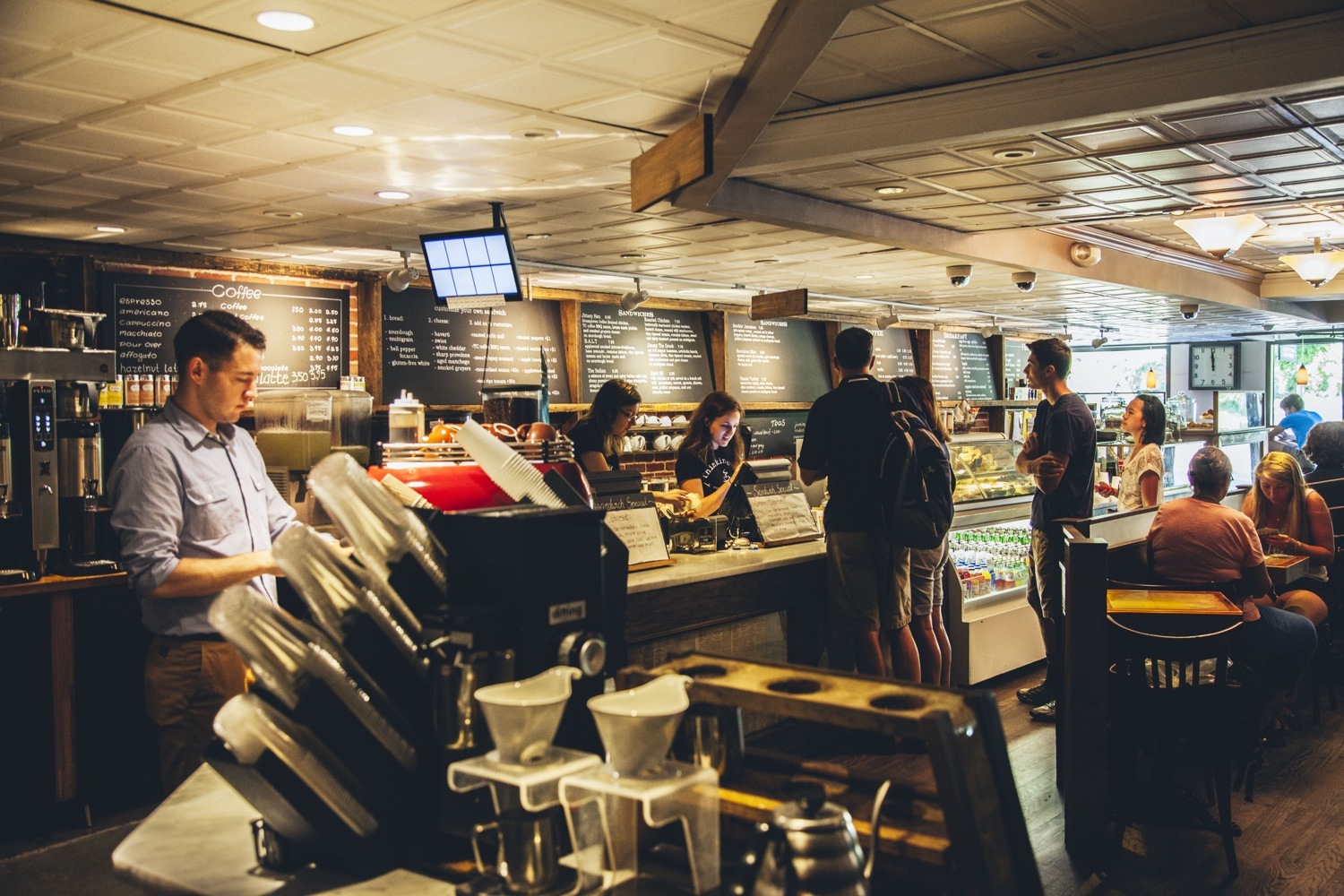
Choosing the appropriate budget level not only affects business operational capabilities but also determines competitiveness and expansion potential in today’s highly competitive coffee market.
Is Running a Coffee Shop Profitable?
The profit of a coffee shop is determined by many factors, including location, service, menu, labor costs, and many other factors. Therefore, to answer the question about whether running a coffee shop is profitable or the break-even capability, you need in-depth knowledge of the factors affecting profit. For medium and large coffee shops, coffee industry experts estimate that the ideal break-even level can reach about 40% monthly. This means that after deducting all costs such as operating costs, material costs, rent, and other expenses, the remaining profit will account for about 40% of total monthly revenue. This break-even level is considered an ideal target and is often used as an indicator to evaluate the business performance of a coffee shop. However, not all coffee shops achieve this break-even level due to various factors such as location, business model, and level of competition in the area.
On average, a medium to large coffee shop can achieve revenue of about $175 to $235 per day, processing about 150-200 transactions with an average price of $1.20 per order. Based on the average profit margin of the coffee industry from 20% to 25% of total revenue, monthly profit can range from $1,400 to $1,750. For a large capital investment of over $75,000, it typically takes up to 2 years to recover capital. However, these figures can vary significantly depending on many factors such as location, service, menu, and especially competition in the area.
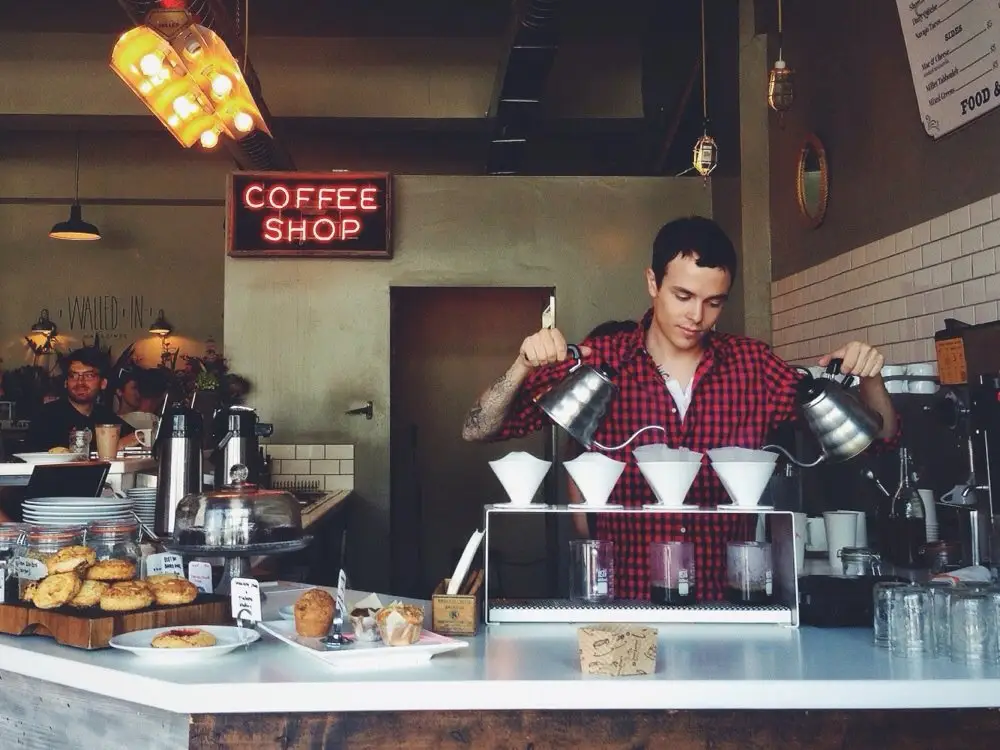
It can be seen that running a profitable coffee shop is a process that requires serious and long-term investment, especially requiring a tight development strategy to provide an accurate answer. However, with a coffee cart business model, you can recover capital quite quickly, usually within 6 to 8 months. Choosing a suitable location, especially crowded locations with easy access to target customers, is extremely important.
For small coffee shop models, rent costs play an important role in success. Rent should account for about 18%-20% of the shop’s projected revenue to optimize profits. Additionally, small coffee shops need to invest properly in other areas such as product quality and cost management reasonably to achieve the desired break-even level and profit. You can expand the menu with specialty drinks and light snacks, create comfortable workspaces, organize events and social activities, provide takeaway coffee service, promote a green environment, and provide health options. Combining these factors will create a unique experience and attract diverse customers, while increasing opportunities to generate additional revenue for your coffee shop.
How Is Business in the Digital Age Different from Traditional Business?
Running a coffee shop in the digital age has shown significant effectiveness in generating profits compared to traditional business forms. In the traditional model, investing in a coffee shop would certainly take more time and costs. This cost source mainly comes from managing the entire business operation, because besides controlling input and output sources, store managers need to control the entire staff at the store, control financial sources, customers… These are all factors that directly affect profit generation during the business operation of the enterprise.
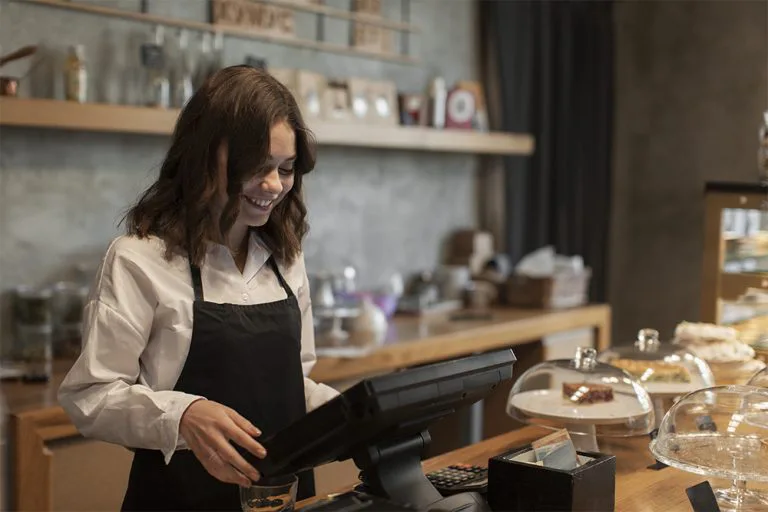
Meanwhile, coffee business in the digital age has opened many new opportunities for current investors. Using online platforms allows businesses to reach a large number of customers and expand the market flexibly. These advances simultaneously help optimize business processes and significantly reduce costs. As a result, businesses applying digital technology can maintain competitiveness and expand their scale globally through profit maximization.
In the future, digital business models are predicted to dominate in a more advanced technological environment. However, traditional models will still maintain their position, and combining elements of both models may become the most optimal solution. To fully leverage the potential that digital transformation brings and achieve expected profits, investors can consider the following approaches:
- Use delivery apps: Leverage delivery apps like Uber Eats, DoorDash, and Grubhub to expand customer reach and facilitate ordering. Having a presence on these platforms helps coffee shops reach a large number of smartphone users, increasing sales and revenue.
- Expand omnichannel sales: In addition to doing business at traditional stores, coffee shops can expand sales operations to online channels such as websites, social media, and e-commerce platforms. This helps increase customer reach opportunities and increase sales.
- Order and payment by QR code scanning: Applying QR code scanning payment technology helps increase customer experience and optimize the payment process. Not only does it save time for customers, but it also reduces risks related to cash and increases modernity for the coffee shop.
- Use management software: Applying management software helps optimize operational processes, manage inventory, track revenue and costs, and optimize human resources. This investment helps minimize waste and increase the shop’s operational efficiency.
In summary, to achieve profits in today’s coffee shop business environment, businesses need to leverage technology and adapt to the digital age to enhance experience and expand customer reach, while optimizing operational processes. This helps create an effective business environment and brings profits to the enterprise.
How Have Major Brands Transformed in the Online Era?
Let’s analyze examples to clearly see how major brands in the coffee market have transformed in the current digital age. Both Starbucks and Peet’s Coffee have proven that applying technology and using data can create competitive advantages in the beverage industry, even in the online era.
Starbucks
- Using customer data: Starbucks collects and analyzes a large amount of data from weekly transactions, thereby making strategic decisions about store locations, products, and services based on information about customer consumption habits.
- Applying artificial intelligence (AI) and IoT: Starbucks has integrated AI and IoT systems into its business strategy, from personalizing customer offers to managing the supply chain and maintaining machinery in stores.
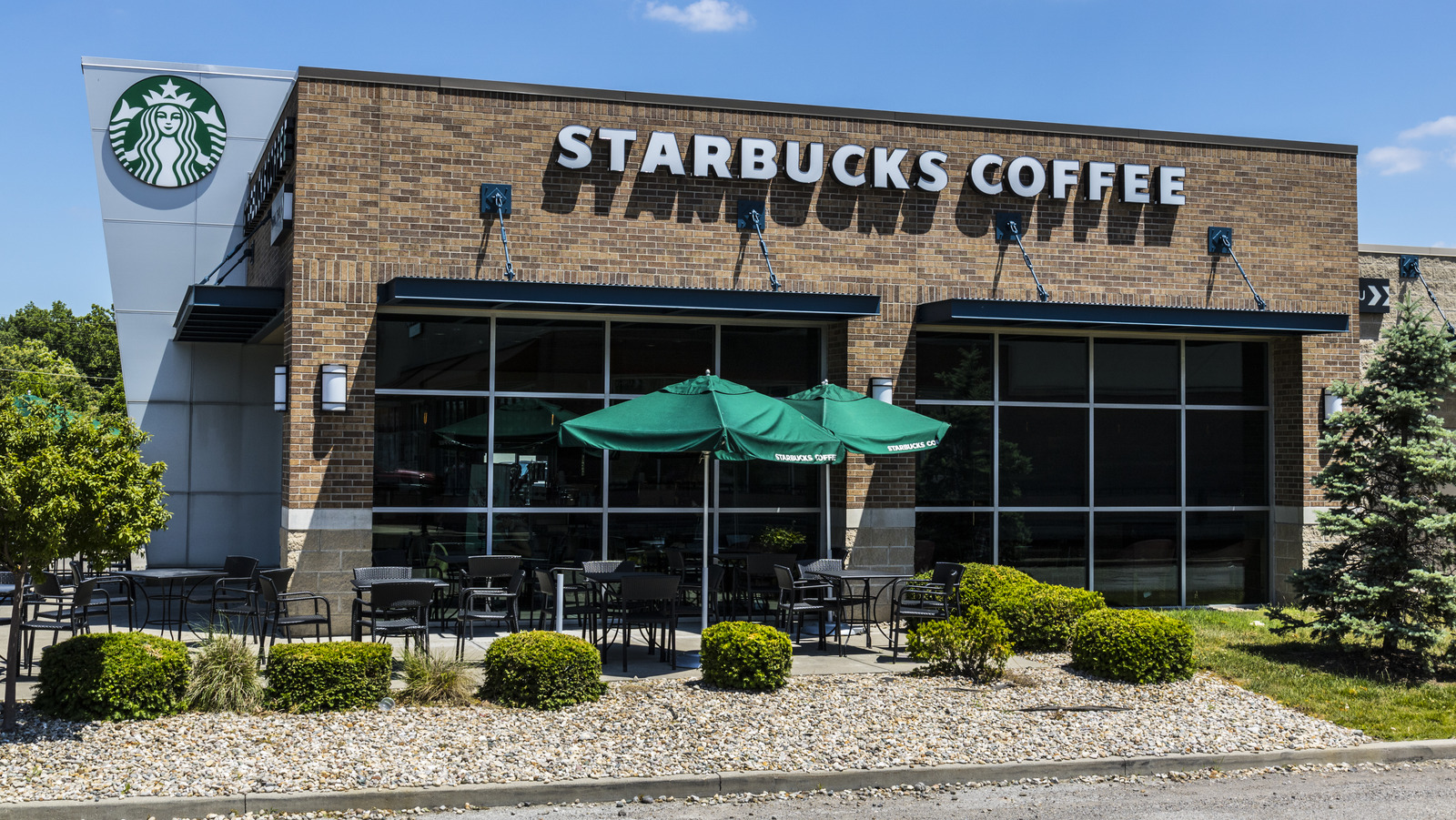
Peet’s Coffee
- Building a strong technology platform: Peet’s Coffee has made technology the second pillar of the business, after people, and has invested heavily in developing applications and customer information management systems.
- Leveraging customer data: Peet’s Coffee has collected and analyzed data from various sources to understand customer consumption habits and create personalized customer care and marketing strategies.
It can be seen that both of these brands use technology and data to create better experiences for customers and optimize their business operations. This proves that in the online era, applying technology and using data is indispensable for businesses in the F&B industry to maintain and develop.
Read more: Should I open a franchise coffee shop?
Factors for Running a Profitable Coffee Shop
Choosing Shop Location
Whether running a coffee shop is profitable depends greatly on choosing the coffee shop location. Generally, when looking for a location to open a coffee shop, you need to consider the following factors:
- Traffic and foot traffic: This helps estimate the shop’s potential customers. A location with high traffic can attract more customers.
- Transportation convenience: The location needs to be easily accessible by various means of transportation, including cars, motorcycles, and public transit.
- Ample parking availability: This makes customers feel more convenient when coming to the shop and can increase the ability to attract customers.
- Near residential areas and offices: A location near residential areas and offices is a major advantage because it creates favorable conditions for workers or residents in that area to visit the shop.
- High population density: A location in an area with high population density is also an important factor, as it increases the ability to attract customers.
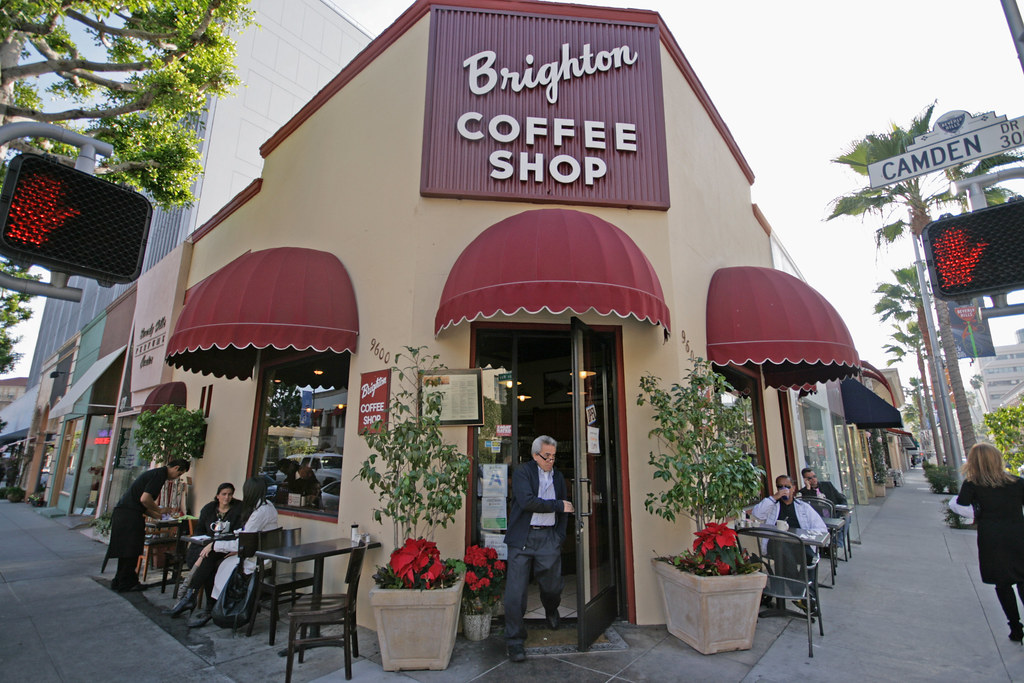
All of these factors need to be carefully considered to ensure that opening a coffee shop will achieve maximum profit and attract a large number of customers.
Product Pricing
In product pricing, businesses, especially startups, often face complex challenges. Because this is not just a simple process but also a “trap” that can cause many businesses headaches and failures in building strategies. To solve this problem professionally and scientifically, detailed calculation of the cost of each product is the most important step. You must clearly determine the cost to know what price is reasonable, competitive enough with industry competitors, but still ensures revenue for the store.
An important note in pricing is customer feedback. If all customers complain about the price, it means the price is too high. Product pricing is a continuous ongoing process; when input costs increase, product prices must also increase accordingly. Price adjustments need to be made carefully and based on customer feedback after each change.
If a business provides high-value products or services, publicly disclosing information about the origin and quality of products is extremely important. This helps customers understand and recognize the true value of the product, thereby they are willing to pay at a higher price without feeling it’s expensive.
Beverage Quality
For coffee business, beverage quality is the most important factor in attracting and retaining customers. No matter how many other factors there are such as location, shop design, or service… but if the drinks don’t meet standards, the shop’s appeal will also decrease significantly.
Customers often remember and return to places where they have truly excellent drink experiences. This shows that coffee shops should focus on providing the highest quality and most attractive products to attract and retain customers.
Even if the shop has beautiful design, ideal space, and perfect amenities, but if the drinks don’t meet customer expectations about flavor and quality, then maintaining customer relationships will become extremely difficult.
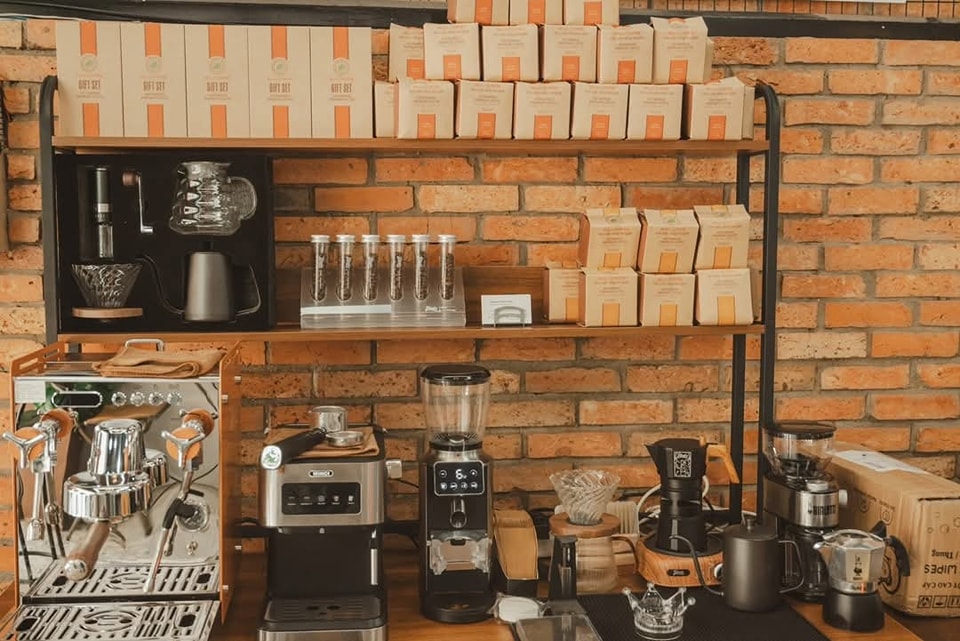
Shop Space Design
In recent years, the American coffee industry has witnessed a significant transformation in consumer culture. This poses a major challenge for businesses as they must quickly adapt to market changes, because “going for coffee” is no longer just about enjoying drinks. Like the story of a young student passionate about exploring unique coffee shops or an office worker looking for a quiet space to work, these are examples of the diversity in customer needs. This requires coffee shop space design to suit target customer groups identified from the beginning.
In this context, clearly understanding and meeting customer needs is very important. As industry experts have shared, identifying target customers and creating products suitable for them is the key to success in this competitive market. With the continuous development of the market and the transformation of consumer demand, businesses in the coffee industry need to be flexible and creative to adapt and survive.
Marketing Campaign
To attract customers and simultaneously optimize profits, applying a smart marketing strategy is very necessary. Marketing campaigns not only help increase the number of customers but also ensure cost efficiency, thereby increasing profits for the business.
Investing smartly and effectively in marketing strategy is an important key to capturing the attention of target customers without having to spend large amounts of money. Consideration and combination between traditional and online advertising channels, along with continuous evaluation and adjustment according to actual situations, are decisive factors for the success of a marketing campaign. An important note is that you should not rely too much on spending a large amount of money on advertising but instead focus on optimizing resources and choosing appropriate development channels as a smart and effective approach in marketing. This helps businesses not only save costs but also achieve better results in attracting and retaining customers.
Service Quality
In coffee shop business, creating a customer interaction experience is an important factor that helps build trust and create long-term connections with customers. Leading coffee brands like Blue Bottle and Starbucks have proven the effectiveness of customer interaction through sending warm greetings when customers enter the shop or giving free gifts during birthday months. This helps create a friendly and intimate environment, evoking positive emotions from customers.
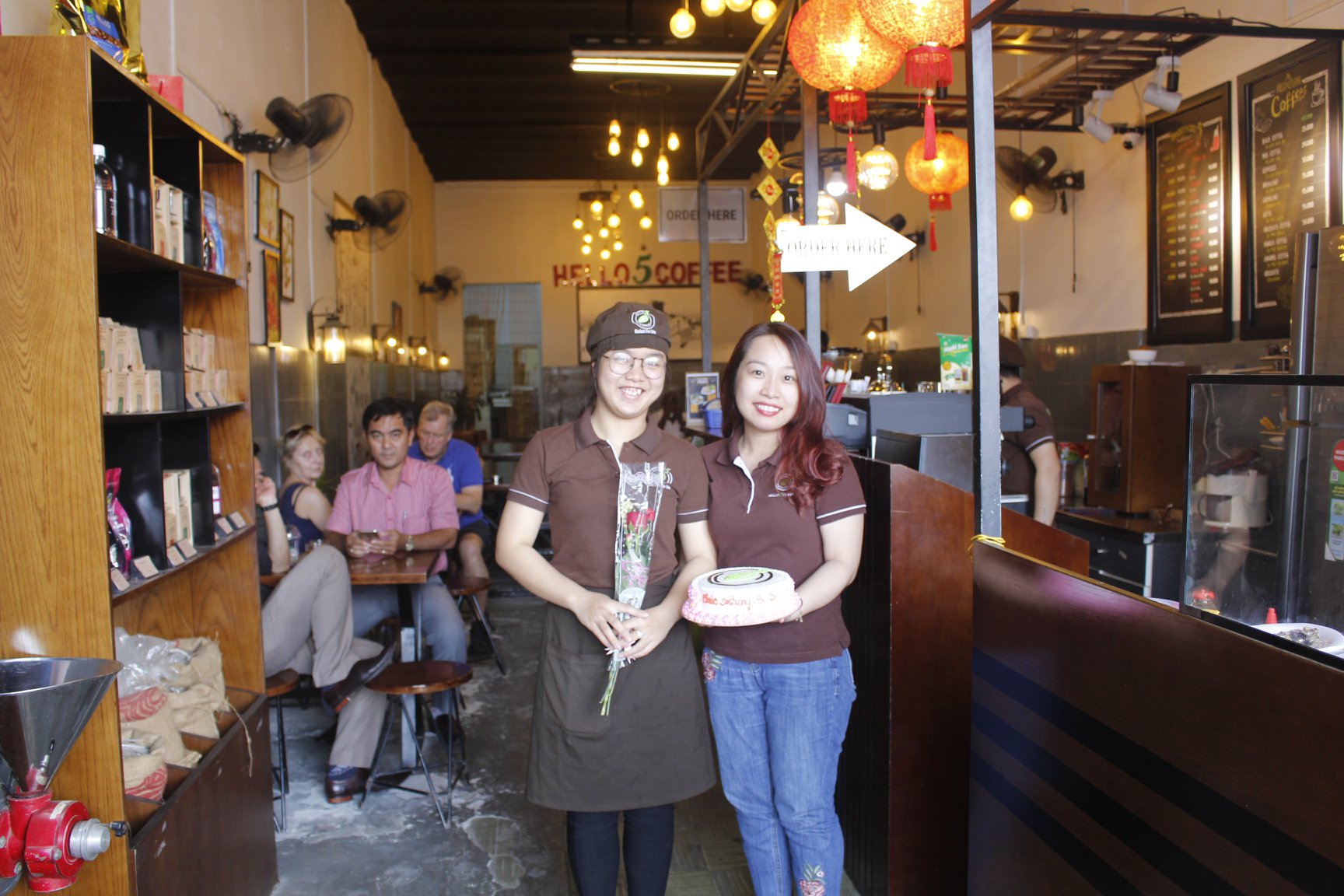
Additionally, building a loyal customer program also plays an important role in attracting and retaining customers. Point accumulation applications and membership cards are not only means to accumulate points but also ways to show appreciation and respect for customer loyalty.
With 80% of revenue coming from 20% of loyal customers, customer interaction and care become an indispensable part of each coffee shop’s business strategy. Only through positive interaction and thoughtful care can a coffee brand create trust and long-term connection with customers.
Read more: 18 Unique and Most Practical Coffee Shop Ideas
Investment in Technology
Investment in technology in the F&B industry is not just a trend but also a necessary strategy to adapt to changes in consumer culture and customer needs. When coffee segments become increasingly crowded, differentiating and meeting the requirements of different customer groups is also a decisive factor for business success. With the explosion of new brands like Blue Bottle, Philz Coffee, La Colombe… businesses need to ask: how to stand out and attract customers in a highly competitive market?
Whether running a coffee shop is profitable depends on the level of competition with competitors; coffee shop businesses need to look further and invest in technology as soon as possible. Digital transformation not only helps optimize operational processes but also brings many other benefits such as freeing labor, limiting losses, and strengthening data-driven decisions.
The Foundation of Success: Premium Vietnamese Coffee Beans
While location, marketing, and technology are crucial factors for coffee shop profitability, there’s one element that often determines whether customers return: the quality of your coffee beans.
This is where Hello 5 Coffee becomes a strategic partner for ambitious coffee shop owners in the United States.
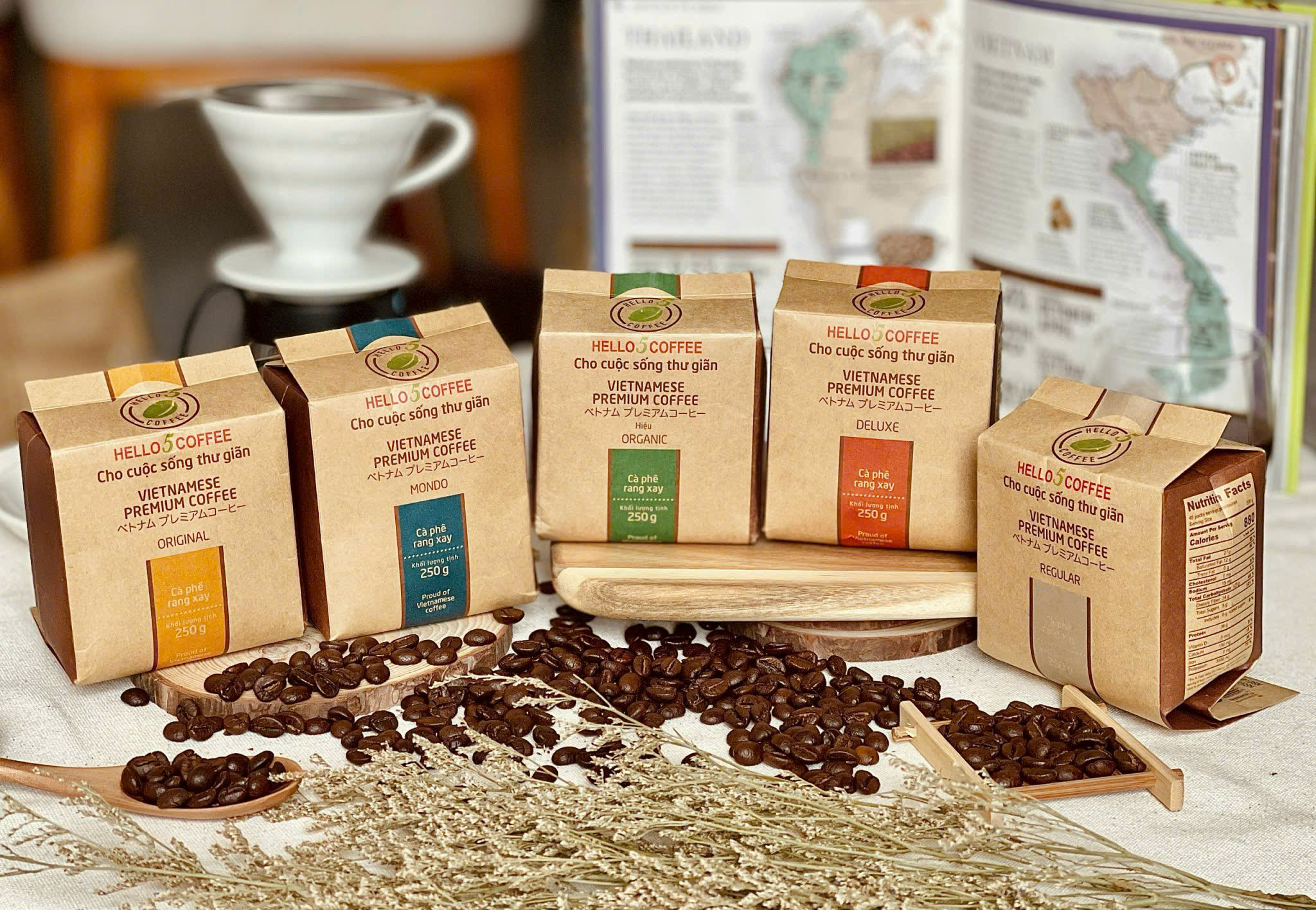
Why Vietnamese Coffee for Your American Coffee Shop?
Vietnam is the world’s second-largest coffee producer, yet its premium beans remain an untapped secret in many American markets. Here’s what makes Vietnamese coffee exceptional:
- Distinctive Flavor Profile: Vietnamese Arabica and Robusta beans offer rich, bold flavors with naturally low acidity and chocolate undertones—characteristics that create memorable drinks customers crave.
- Cost-Effective Premium Quality: Vietnamese coffee provides specialty-grade quality at competitive wholesale prices, improving your profit margins without compromising taste.
- Sustainable Sourcing: Our beans come from family-owned farms in Vietnam’s Central Highlands, where volcanic soil and ideal climate produce consistently excellent coffee.
- Supply Chain Reliability: With established export infrastructure and quality control systems, Hello 5 Coffee ensures your business maintains consistent product quality.
How Hello 5 Coffee Supports Your Profitability
As a wholesale and export specialist, we understand that your coffee shop’s success depends on reliable suppliers who deliver both quality and value:
- Wholesale pricing that protects your margins: Direct sourcing means better prices than traditional distributors
- Customized roast profiles: We can work with you to develop signature blends that differentiate your brand
- Flexible order quantities: From small independent shops to growing chains, we scale with your business
- Expert consultation: Our team provides brewing guidance and menu development support
A Strategic Advantage in a Competitive Market
In today’s saturated coffee market, differentiation isn’t optional—it’s survival. Offering Vietnamese coffee gives your shop a unique selling proposition that larger chains can’t easily replicate. It’s a conversation starter, a quality differentiator, and a margin enhancer all in one.
Whether you’re calculating your break-even timeline or planning your second location, the economics are clear: premium coffee at competitive wholesale prices accelerates profitability.
Ready to explore how Vietnamese coffee can improve your bottom line? Contact Hello 5 Coffee today for wholesale pricing and sample requests. Let’s build your coffee shop’s success on a foundation of exceptional beans.
